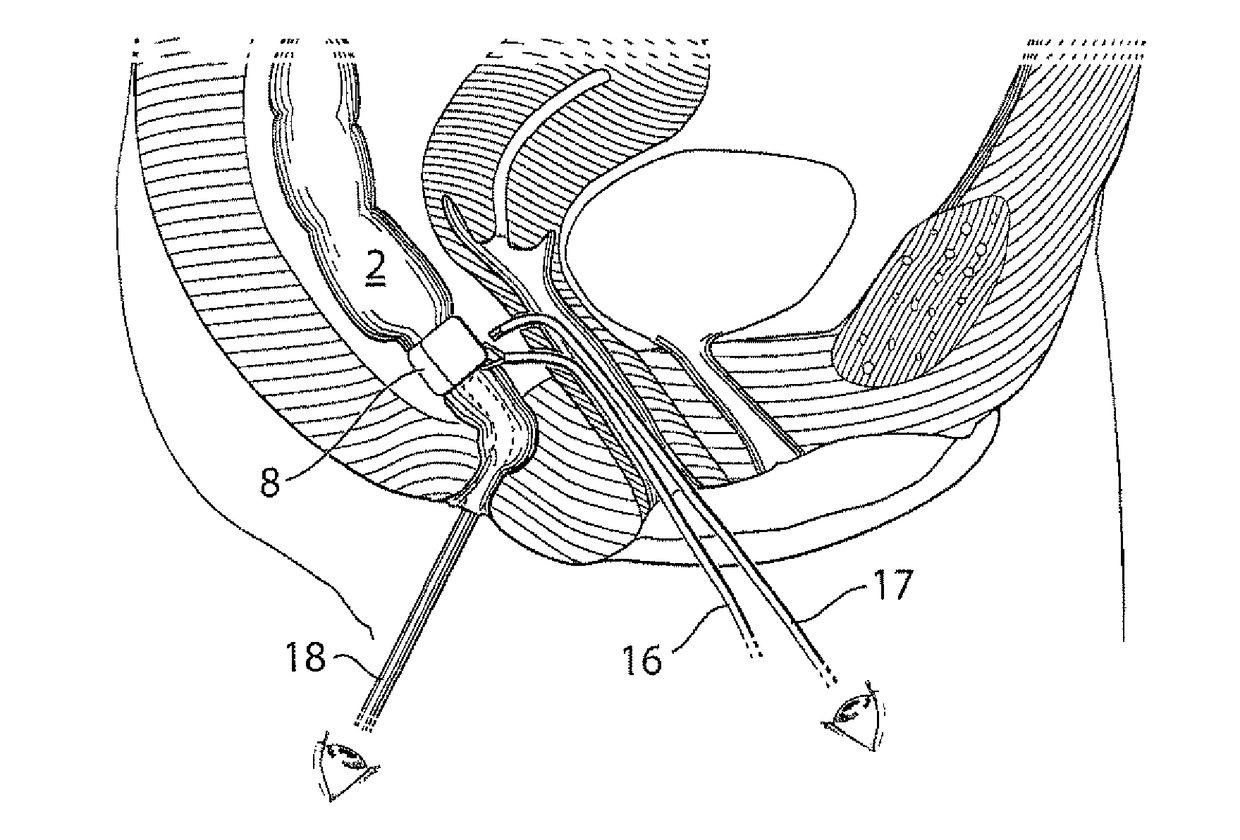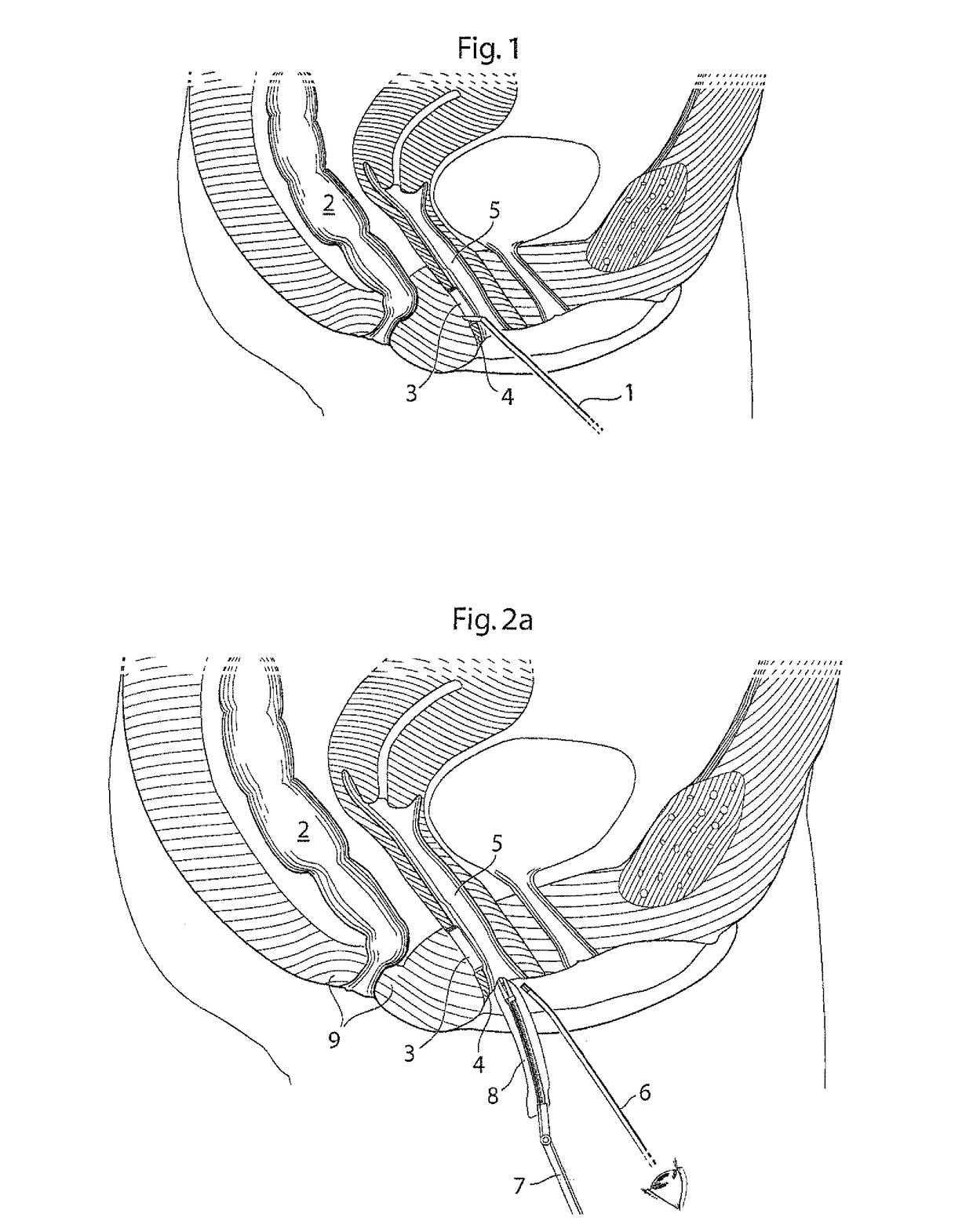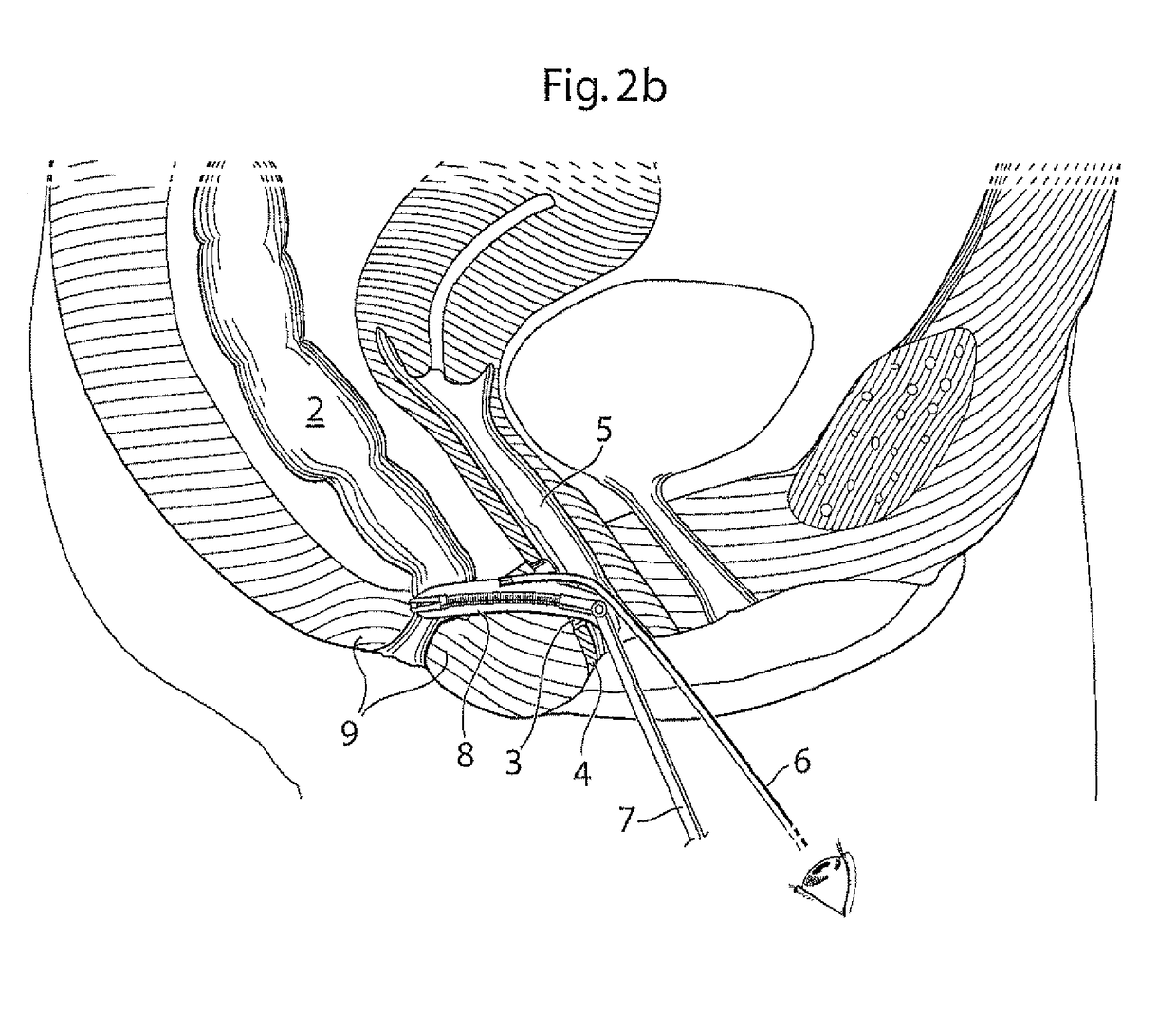Vaginal operation method for the treatment of anal incontinence in women
a vaginal operation and incontinence technology, applied in the field of vaginal operation, can solve the problems of poor long-term success rate, severe lowering of quality of life, and malfunction of pumping components, and achieve the effect of reducing risk
- Summary
- Abstract
- Description
- Claims
- Application Information
AI Technical Summary
Benefits of technology
Problems solved by technology
Method used
Image
Examples
Embodiment Construction
[0157]FIG. 1 shows how a surgeon uses a surgical tool 1 to access the rectum or colon 2 through an incision 3 in the wall 4 of the vagina 5 of the patient.
[0158]FIG. 2a shows a subsequent step of the method, where a viewing scope 6 has been inserted through the incision 3 in the wall 4 of the vagina 5. The viewing scope allows the surgeon to carry out surgical procedures in a minimally invasive manner. A surgical instrument 7, which is described in detail below, is used for dissecting the area 9 around the rectum 2 to enable the implantation of the restriction device 8. FIG. 2a shows how the surgical instrument 7 is used for introducing the restriction device 8 in its open conformation into the vagina for subsequent insertion to the correct place in a manner described in more detail below.
[0159]FIG. 2b shows the next step of the method, where the surgical instrument has brought the restriction device 8, which is still in its open conformation, though an incision 3 in the wall 4 of t...
PUM
 Login to View More
Login to View More Abstract
Description
Claims
Application Information
 Login to View More
Login to View More - R&D
- Intellectual Property
- Life Sciences
- Materials
- Tech Scout
- Unparalleled Data Quality
- Higher Quality Content
- 60% Fewer Hallucinations
Browse by: Latest US Patents, China's latest patents, Technical Efficacy Thesaurus, Application Domain, Technology Topic, Popular Technical Reports.
© 2025 PatSnap. All rights reserved.Legal|Privacy policy|Modern Slavery Act Transparency Statement|Sitemap|About US| Contact US: help@patsnap.com



